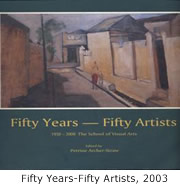My publishing activities have often converged with my curatorial projects that call for distinct skills and I am fortunate to have been involved with projects where I could hone both my editorial and writing abilities. The first significant project that called for my editorial work, was the Royal Academy's Africa the Art of a Continent. I worked on this book as the co-ordinating editor supporting the curator/editor Tom Phillips and liaising with its more sixty-eight world renowned contributors. The book is a weighty tome of over 600 pages that documents the entire continent, including ancient Egypt and Nubia and north and northwestern Africa as well as the sub-Saharan region. Each object is reproduced in color and accompanied by extensive catalog entries written by over 60 expert contributors. The catalog section is preceded by five essays contributed by major scholars in the field. The essays discuss the nature of African art and its appreciation.
 Although, on a smaller geographical scale, my work as editor/curator of Fifty Year-Fifty Artists for the School of Visual Arts in Jamaica involved similar logistical and communication skills. This book required my liaison with fifty artists and a dozen essay writers, co-ordinating their resumes as well as writing their biographies.In addition, I was commissioned to write two essays, the first being the historical introduction about the College's history and the second examining the development of its fine arts programs. Fifty years-Fifty Artists demonstrated the dramatic development in the teaching of Fine Arts since the Jamaica School of Arts and Crafts received its charter back in the 1950s under the guidance of its founder, the sculptor Edna Manley. It has moved from a hierarchical academy approach that was historically the norm in almost all European art institutions, towards a methodology that is post-modern and more finely tuned to the needs of its Caribbean students. This transition from apprenticeship to ownership has been gradual, but it has revolutionised the way that artists see, articulate and communicate visually. Evidence of this is seen everyday in the growing confidence of students’ visual expressions. Today it is possible to speak of an art historical tradition and a lineage of artistic styles reflected in a young artists work. It is now possible to speak about generations of painters and discern a qualitative difference between vanguard graduates of the 1960s and the rebel followers of the 1980s. This is a mark of the School of Visual Art’s maturity.
Although, on a smaller geographical scale, my work as editor/curator of Fifty Year-Fifty Artists for the School of Visual Arts in Jamaica involved similar logistical and communication skills. This book required my liaison with fifty artists and a dozen essay writers, co-ordinating their resumes as well as writing their biographies.In addition, I was commissioned to write two essays, the first being the historical introduction about the College's history and the second examining the development of its fine arts programs. Fifty years-Fifty Artists demonstrated the dramatic development in the teaching of Fine Arts since the Jamaica School of Arts and Crafts received its charter back in the 1950s under the guidance of its founder, the sculptor Edna Manley. It has moved from a hierarchical academy approach that was historically the norm in almost all European art institutions, towards a methodology that is post-modern and more finely tuned to the needs of its Caribbean students. This transition from apprenticeship to ownership has been gradual, but it has revolutionised the way that artists see, articulate and communicate visually. Evidence of this is seen everyday in the growing confidence of students’ visual expressions. Today it is possible to speak of an art historical tradition and a lineage of artistic styles reflected in a young artists work. It is now possible to speak about generations of painters and discern a qualitative difference between vanguard graduates of the 1960s and the rebel followers of the 1980s. This is a mark of the School of Visual Art’s maturity.
I was also invited to create an exhibition of the same name featuring contemporary works of all fifty artists as well as a historical survey complete with vintage works for the College's Collection and the National Gallery of Jamaica. The publication and exhibition in 2003 that marked the college's anniversary became the inaugural exhibition for the college's art gallery [cage] in it's newly built library, while the book has become a showcase publication for the college. Following both of these projects, I went on to become the consultant/head art history for the college and to implement a database project for its library (see below).
While based in Jamaica, I continue to make a contribution to the arts and Caribbean publishing. I am currently the Arts Editor for the Jamaica Journal, that country's most prestigious quarterly for the sciences and arts, published by the Institute of Jamaica. In addition to evaluating, editing and commissioning scholarly texts, I regularly contribute my own articles, see for instance “Desperately Seeking Africa” Jamaica Journal, 2004, “Diaspora Families in Black and White”, Jamaica Journal, 2006, The Arts (Review),“ Belisario: Art and Emancipation in Jamaica“,Jamaica Journal, 2007 and a forthcoming article “The Other Belisario“, Jamaica Journal, 2009.